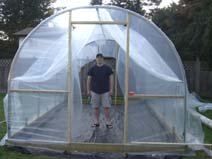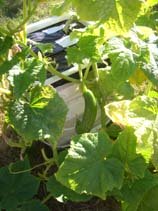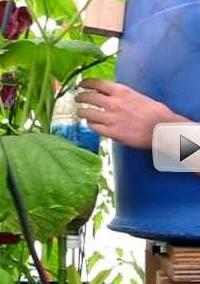|
How does a Greenhouse Work ? - A Nutshell Explanation.How does a greenhouse work?: I came across this video that explains it quite well, you let me know if you are able to get this song out of your head…. Because I couldn’t, and can’t. Ok… whether you liked it, you didn’t, or you are cursing me for showing you that video, here it is in a nutshell. Greenhouses Trap and Hold heat. The more in-depth explanation – “Thermal Mass Included” Basically the Greenhouse traps the suns rays, and increases the internal temperature of the greenhouse, which, when properly maintained through ventilation, the plants love.
Example: If you place a rock in the Sun for a while, and then move it into the shade, it will still be worm to the touch well after it has been moved. Many Greenhouse growers, that relies solely on the Sun to heat their greenhouses, often ad Jugs of water (usually in painted black plastic containers) to allow for more Thermal Mass. These jugs, rocks etc…. Are able to hold the heat, usually well into the evening when temperatures begin to cool off. This Thermal mass, that holds the captured heat, lets the heat out gradually in the form of long heat waves, which are unable to pass back through the greenhouses glazing or cover. So the cycle begins, the heat stays trapped in the greenhouse, until the outside temperature has cooled too much, or the captured heat has escaped through or has been vented. The addition of Aquaponics is a great way to ad thermal mass to a greenhouse (I thought that it would be a good segue for the introduction of Fish and Plants growing together). |
Please Help Us Get Social:
Valued Links and Featured Sites:
Greenhouse Plans
Free Greenhouse Gardening Construction Plans
"Ole Dirt Farmer"

Self Watering Container Plans
Don't want to make your own. There is also information about Earthboxes too.
These are great, either or.
Free Self Watering Container Plans
Jonathan White: Food 4 Wealth
It is a great fit. Be sure to take a look. Jonathan is a passionate guy. See below for our full review.
Aquaponic Plans
Links on this page will take you to Travis's free e-book.
A Malispina college student shares a video of her completed Barrelponic project. Complete with Tilapia.
Free Aquaponics (Fish and Vegetables) Plans










